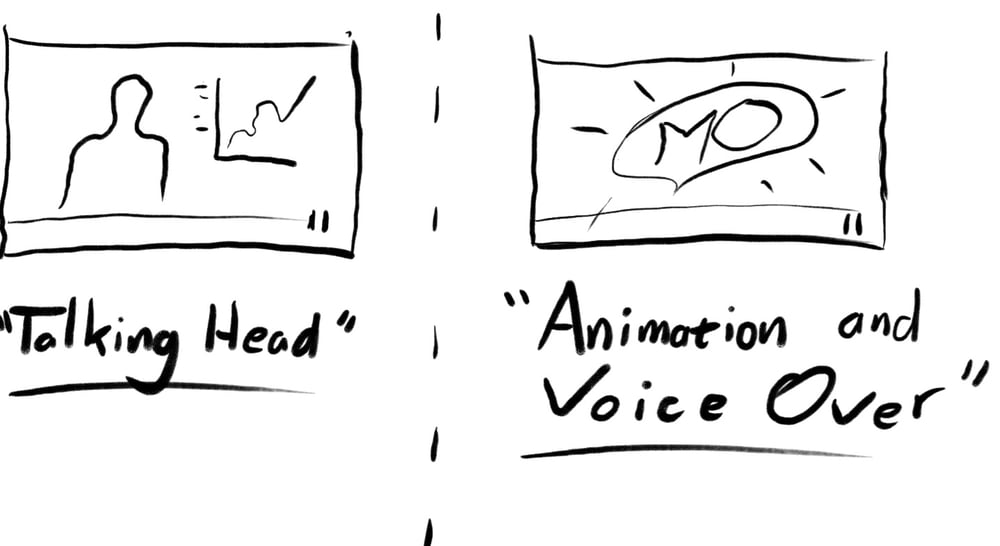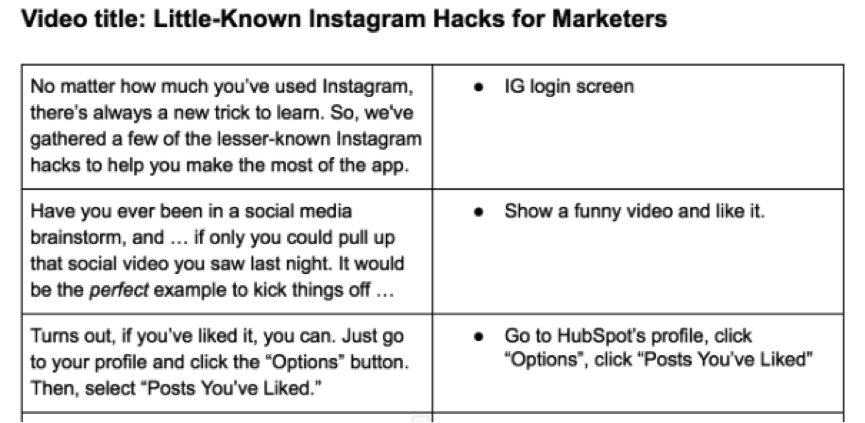According to Cisco; By 2022, online videos will make up more than 82% of all consumer internet traffic — 15 times higher than it was in 2017.
In this day and age where the attention span of users dwindles by the day; video is an option no business that is serious about its marketing can do without.
Let’s face it, words will forever remain powerful, but reading through a 15-page 'blog' about Inbound Marketing just isn't as appealing as a series of concise, 3-minute videos utilising music and animations.
Video uses multi-sensory language, and as a result, it gives businesses the opportunity to connect with their target audience on a mental and emotional level, influencing and fast-tracking a customer’s decision.
Ok, so you've seen the stats about the incredible engagement advantages video marketing has and you've got an idea for your brand - what now?
6 Steps to Video Marketing
If you don't have an idea yet, just think about what truly separates your brand from its competition and you can think about this from a 'corporate video' perspective...
Step 1: Get a Plan For Your Video
It’s not enough to just have an idea for your video, you also need to have a plan, and to get a plan you need to ask yourself the right questions.
Will the video be best suited to being a stand-alone video or if it would work better in a series?
Hint: A series should be your goal here because the more content your brand has to work with, the more inbound traffic from social media your website landing pages will get.
Who is the target audience for your video marketing campaign?
Hint: Decide on the buyer personas you are targeting. The more specific you are, the more direct your messaging will be.
Where is the video going to be published?Hint: YouTube, Facebook, Instagram, Vimeo, 23 all have their own pros and cons, make sure the platform you choose is aligned with your intended audience and video marketing campaign purposes.
What resources are needed for the video?
Hint: What creative skills do you need? How much will you need to get it done? Who should you get into your team?
Step 2) Decide on a goal for the video/series and decide on performance tracking.
It’s not enough to have a video produced for marketing purposes, you need to do it with a definite purpose and a goal, and just as importantly, you should also be able to track the video’s performance - view count, video engagement, click-through rates, video conversion rates, etc.
To perform video tracking, you may use tools such as Google Analytics, Google Tag Manager, or any other video monitoring and tracking tools.
Some of the goals you can set for your video marketing include the following:
- Create awareness
- Generate traffic towards your landing page
- Capture prospect information and convert more leads.
- Attribute numerical values supported by social media's educated estimations as much as possible.
If this already seems a little overbearing after 2 steps - stay calm because there are many Inbound Marketing professionals out here interested in understanding your brand and using their expertise to bring your ideas to life in a way that's accessible to your business.
Step 3) Clarify, Summarise & Structure Video Content
When it comes to video, it’s important to understand you have a limited time window to attract and engage your viewer’s attention; so precision is key.
So you've got a whole bunch of content to get through and it's a little jumbled up. It's essential that you make the content concise and group sections that logically fit together before you write a video script.
Remember - more often than not, simplification takes time because it's the result of you understanding something well enough that you could actually teach it to that sneezing toddler I mentioned earlier...
Step 4) Pick a video format, presentation style and presenters to express the script.
Different video formats can be received differently, and can also certainly have varying impacts on different audiences. With this said, you should weigh the differences and decide on the most effective video format to use for your presentation.
Some of the video format options you could use are:
Whiteboard Videos - Shows the viewer static images being drawn on the screen. These are usually great for illustrating complex ideas.
Live-Action - This video style shows real people talking about your product or service and gives a personal look at your company. Live-action videos are great for boosting sales.
Interview videos - People love hearing things straight from the horse's mouth, which is why interview videos can be so captivating. They're trustworthy and insightful.
Animation Videos - Cartoon videos strengthen your brand identity and engage potential customers at the same time. They don’t just promote a product or service but also tell an entertaining story that catches the eye and grabs all kinds of audiences.
Testimonials: Great testimonial videos are best at highlight pain points that customers can relate to, and how your business can offer a solution to this; thus helping create demand through necessity.
Examples:

Classy animations and tasteful cinematic effects supporting a good script, come in later.
Content value, brand personality and brand consistency is key.
Step 5) Develop a Script For The Video
A video script is great for simplifying and focusing the video content without losing the attention of its intended audience.
Writing a script is like writing for Ron Burgundy's teleprompter - ok not quite, but it's important you consider the presenter's personality. Keep it interesting, on-brand and conversational.
Here's an example:

Step 6)
Real Step 6) Choose a partner with creative expertise and a professionally equipped studio
What’s great about partnering with a skilled video creative is the fact that you can get your ideas with much more effectiveness. So, get the most out of the experience by collaborating closely and having fun with the project.
OR
If you know exactly what you want and are seeking a much simpler execution without the need for animation and creative influence, you can follow this DIY guide (40 min read)
In Summary
The modern customer wants to see the product in action, and video is one of the most efficient and effective ways to convey information.
In fact, when biteable tested Facebook video ads against text ads, they found that the video got 480% more clicks, was 497% cheaper per click, and cost 280% less per lead.
As Bo Dietrick once said, “Video allows us to tell the great stories of our customers, rather than our own. Great marketing starts with great stories. Be unique, inspire, and connect.”
Video marketing is a very effective way of increasing your online presence whilst building meaningful and mutually beneficial relationships with your customers.
So, go ahead and start building your presence through video marketing.
How are you going to show it? We'd love to know more...





